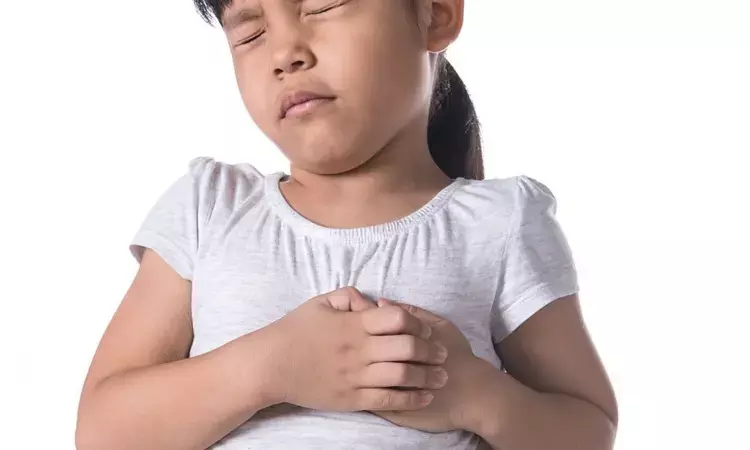- Home
- Medical news & Guidelines
- Anesthesiology
- Cardiology and CTVS
- Critical Care
- Dentistry
- Dermatology
- Diabetes and Endocrinology
- ENT
- Gastroenterology
- Medicine
- Nephrology
- Neurology
- Obstretics-Gynaecology
- Oncology
- Ophthalmology
- Orthopaedics
- Pediatrics-Neonatology
- Psychiatry
- Pulmonology
- Radiology
- Surgery
- Urology
- Laboratory Medicine
- Diet
- Nursing
- Paramedical
- Physiotherapy
- Health news
- Fact Check
- Bone Health Fact Check
- Brain Health Fact Check
- Cancer Related Fact Check
- Child Care Fact Check
- Dental and oral health fact check
- Diabetes and metabolic health fact check
- Diet and Nutrition Fact Check
- Eye and ENT Care Fact Check
- Fitness fact check
- Gut health fact check
- Heart health fact check
- Kidney health fact check
- Medical education fact check
- Men's health fact check
- Respiratory fact check
- Skin and hair care fact check
- Vaccine and Immunization fact check
- Women's health fact check
- AYUSH
- State News
- Andaman and Nicobar Islands
- Andhra Pradesh
- Arunachal Pradesh
- Assam
- Bihar
- Chandigarh
- Chattisgarh
- Dadra and Nagar Haveli
- Daman and Diu
- Delhi
- Goa
- Gujarat
- Haryana
- Himachal Pradesh
- Jammu & Kashmir
- Jharkhand
- Karnataka
- Kerala
- Ladakh
- Lakshadweep
- Madhya Pradesh
- Maharashtra
- Manipur
- Meghalaya
- Mizoram
- Nagaland
- Odisha
- Puducherry
- Punjab
- Rajasthan
- Sikkim
- Tamil Nadu
- Telangana
- Tripura
- Uttar Pradesh
- Uttrakhand
- West Bengal
- Medical Education
- Industry
Obese children have increased risk of eosinophilic esophagitis

When diagnosed with eosinophilic esophagitis (EoE), about one-third of children had obesity or overweight status, finds an article published in Annals of Allergy, Asthma & Immunology.
A chronic immunological and antigen-mediated illness with a high morbidity and a detrimental effect on quality of life is eosinophilic esophagitis. Esophageal biopsy samples with at least 15 eosinophils per high-powered field are necessary for the diagnosis of EoE. One in 2000 people are thought to currently have EoE. It is unclear how body mass index (BMI) and eosinophilic esophagitis in children relate to one another. The goal of this study, which was carried out by Rebecca Koenigsberg and colleagues, was to assess the EOE presentations in paediatric patients of various weight classes.
From January 2015 to December 2018, records of newly diagnosed children (under 18 years of age) with EoE at an academic children's centre in the United States were examined. The Database of Patients with Eosinophilic Inflammation of the Gastrointestinal Tract is kept up to date by the Division of Pediatric Gastroenterology. More than 2500 Riley patients who have been diagnosed with eosinophilic GI disorders are included in this resource. The Institutional Review Board (IRB) of the university has given its approval for this database. The examination of the underweight, overweight, normal weight, and obese groups was done while comparing demographics, symptom presentation, and endoscopic results.
The key findings of this study were:
Between 2015 and 2018, 341 patients between the ages of 0 and 18 received a new EoE diagnosis.
17 of the 341 were underweight, 214 were average weight, 47 were overweight, and 63 were obese.
Children with obese and overweight BMIs were more likely to have an older diagnosis and to complain mostly of stomach discomfort when they presented for care.
Children who were normal weight and underweight had a higher likelihood of having an IgE-mediated food allergy.
In contrast to children with overweight and obese BMI, normal weight children were more likely to be screened for food allergies and inhalant allergies and to exhibit linear furrows on endoscopy.
Regarding BMI status and EoE diagnosis, no significant variations were discovered by race, gender, insurance type, atopic dermatitis, asthma, or allergic rhinitis.
Children with BMIs in the overweight or obese category had a higher likelihood of being older at diagnosis and presenting with stomach discomfort as their primary complaint.
Reference:
Koenigsberg, R., Gupta, S., Slaven, J. E., Sarin, T., & Vitalpur, G. (2023). Body Mass Index in relation to symptom presentation upon diagnosis of Eosinophilic Esophagitis in Children. In Annals of Allergy, Asthma & Immunology. Elsevier BV. https://doi.org/10.1016/j.anai.2023.06.004
Neuroscience Masters graduate
Jacinthlyn Sylvia, a Neuroscience Master's graduate from Chennai has worked extensively in deciphering the neurobiology of cognition and motor control in aging. She also has spread-out exposure to Neurosurgery from her Bachelor’s. She is currently involved in active Neuro-Oncology research. She is an upcoming neuroscientist with a fiery passion for writing. Her news cover at Medical Dialogues feature recent discoveries and updates from the healthcare and biomedical research fields. She can be reached at editorial@medicaldialogues.in
Dr Kamal Kant Kohli-MBBS, DTCD- a chest specialist with more than 30 years of practice and a flair for writing clinical articles, Dr Kamal Kant Kohli joined Medical Dialogues as a Chief Editor of Medical News. Besides writing articles, as an editor, he proofreads and verifies all the medical content published on Medical Dialogues including those coming from journals, studies,medical conferences,guidelines etc. Email: drkohli@medicaldialogues.in. Contact no. 011-43720751


